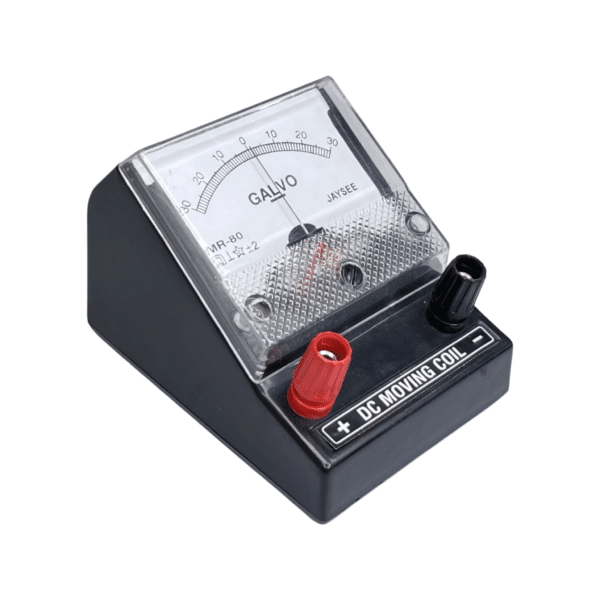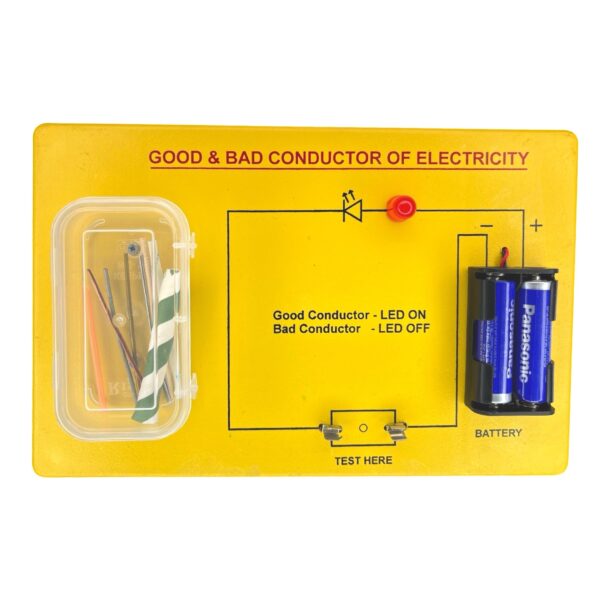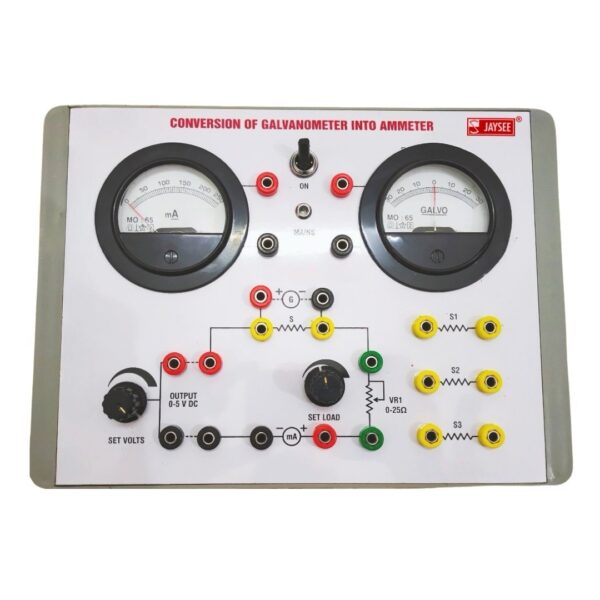- Pick up from the Samtech Store in Ambala
To pick up today
Free
- Courier delivery
Our courier will deliver to the specified address
4-5 Days
200+



The instrument includes a built-in DC-regulated power supply and two analog moving coil meters. Suitable shunt resistances are mounted behind the front panel of the Conversion of Galvanometer into Ammeter Apparatus with their important connection points brought out at 4 mm sockets.
₹3,000 Original price was: ₹3,000.₹1,450Current price is: ₹1,450. (Exc. GST)
To pick up today
Free
Our courier will deliver to the specified address
4-5 Days
200+
AIM
To convert the given galvanometer (of known resistance and figure of
merit) into (i) an ammeter of a desired range (say 0 to 30 mA) and to verify the same.
Specifications:
This Apparatus has been designed to calculate the value of the shunt connected in parallel to the galvanometer to convert it into an ammeter.
This Instrument comprises of:
A galvanometer is a device that can detect the presence of small currents and measure them; since large currents will damage the coil. A needle shows deflection on a scale graduated in ampere (unit of current). The maximum current that can cause full scale deflection in a galvanometer is called “ maximum deflection current
The value of
is of the order of
Galvanometer
An ammeter is an equipment used to measure large currents. An ideal ammeter has zero resistance. Lesser the resistance of the ammeter, more accurate its reading will be. Ammeter is always connected in series in a circuit.
A galvanometer can be converted into an ammeter by connecting a low resistance called shunt in parallel with it; so that the majority of the current will be allowed to pass through the shunt while only a small portion of the current will pass through the galvanometer.
Let be the current in the circuit and
be the full scale deflection of the galvanometer.
is the current that will pass through the shunt. The combination of galvanometer and shunt will behave as an ammeter. Let be the value of shunt resistance and
indicate the galvanometer resistance. Since they are connected in parallel, their voltage drop would be the same, meaning the product of their respective currents and resistances are equal.
I.e,
The above equation gives the shunt resistance value, which needs to be connected in parallel with the galvanometer to measure current.
The effective resistance of the ammeter so formed is given by .
In stock
No account yet?
Create an Account
SAMTECH INSTRUMENTS
Typically replies within minutes
Any questions related to Conversion of Galvanometer into Ammeter?
🟢 Online | Privacy policy
WhatsApp us

